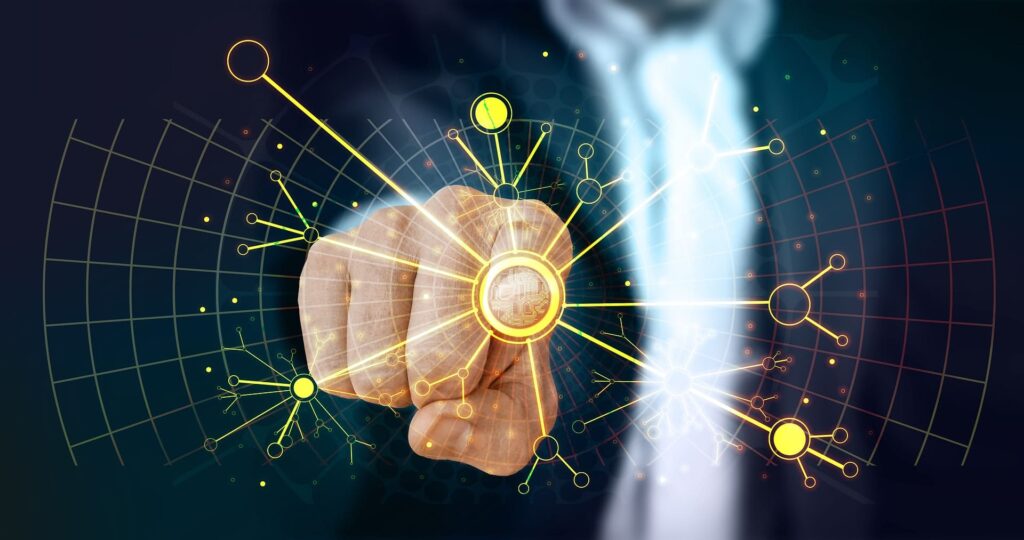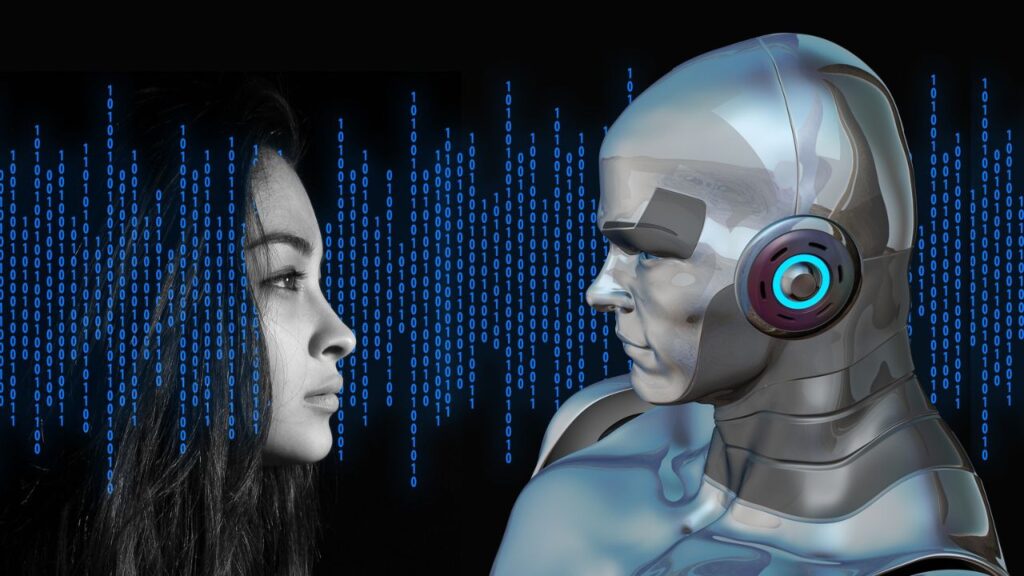Gone are the days when Artificial Intelligence (AI) was considered a science fiction concept. AI has now become a reality, with almost every industry deploying it for multiple use cases. This miraculous, innovative technology is currently the talk of the town, and for good reason.
From voice search engines providing quick results on search engines and auto-focus features in smartphones to voice assistants like Alexa, robot greeters at shopping complexes, and auto-driven cars, AI is increasingly becoming a part of everyone’s daily lives.
According to experts, artificial intelligence is a vital factor of production, which can introduce innovative sources of growth and change how work is carried out across varied industries.
Furthermore, artificial intelligence is projected to acquire a global market size of US$826.70 billion by 2030 at an annual growth rate of 28.46% from 2024 to 2030.
Now, the question is why AI is becoming so popular across various industries. One simple answer is that AI can perform complex, human-like tasks, making the jobs relatively easier for humans.
If you are curious to know what Artificial Intelligence is and why it matters, this article is for you. Keep reading to learn more about artificial intelligence, from its meaning, history, and components to its benefits and applications.
What is Artificial Intelligence?
Artificial Intelligence, abbreviated as AI, combines multiple technologies, from sensors to robotics, to let machines sense, understand, act, and learn like human intelligence. This technology is developed based on the analysis of how the human brain works, its pattern, and cognitive thinking.
Many technologies, such as machine learning, deep learning, computer vision, natural language processing, and more, are part of the AI landscape. These technologies are combined to develop AI algorithms based on the human brain’s decision-making process.
You can even hear some people categorizing artificial intelligence into ‘narrow’ and ‘general’ AI. Let’s learn what is narrow and general AI:
-Narrow AI
Narrow AI or weak AI is what individuals experience in their daily lives. This AI technology can perform a single task or multiple closely related tasks. Examples of narrow AI include weather applications, digital assistants, or applications that can analyze data to optimize a specific business function.
These AI systems are powerful but cater to a narrow playing field. Moreover, they are designed solely to drive efficiencies.
-General AI
General AI or strong AI is like what a person sees in a science fiction movie, where machines are designed to emulate human intelligence. Thus, these AI machines can think strategically, creatively, and abstractly like humans to handle multiple complex tasks.

Exploring the History of Artificial Intelligence
The groundwork of artificial intelligence dates back thousands of years, with Alan Turing first introducing it in his paper named ‘Computing Machinery and Intelligence.’ This paper by Alan later became The Turing Test, which the experts used to measure computer intelligence.
In 1955, John McCarthy used the term ‘Artificial Intelligence’ at the first AI conference at Dartmouth College.
Three years later, in 1958, John McCarthy developed the first programming language, LISP (List Processing), for AI research. The first ‘chatterbot’ (shortened as a chatbot), named Eliza, was created by Joseph Weizenbaum in 1966. It uses natural language processing to communicate with humans.
Moreover, the American Association of Artificial Intelligence, now established as the Association of Advancement of Artificial Intelligence (AAAI), came into the picture in 1979.
Stanford Research Institute developed the world’s first general-purpose robot, Shakey (a smart autonomous robot), between 1966 and 1972. Later, in February 1996, IBM came up with Deep Blue, the first supercomputer to beat Garry Kasparov, the world chess champion.
In the later years, AI developed rigorously, giving birth to many smart inventions, from smart robotics devices to voice recognition assistants, smart streaming and social media platforms, home automation, and much more.
How Does Artificial Intelligence Work?
Artificial intelligence systems work by accepting and combining large data inputs in the form of text, images, or speech. Moreover, with the help of iterative processing algorithms, AI learns the features and patterns and makes interpretations and predictions based on the given data input they analyze.
Every time an AI system processes a given data, it tests and measures its performance while developing additional expertise. AI doesn’t need a break and can run through enormous tasks extremely quickly, learn a lot in very little time, and become incredibly capable of what it’s designed to accomplish.
Another point you should note is that artificial intelligence is not a single computer application or program but an entire discipline or science. AI science aims to create a computer system that can model human behavior and use human-like thinking processes to determine the solution to complex problems.
Therefore, to achieve this objective, AI systems leverage several techniques and processes, forming AI’s key components.

Knowing the Key Components of Artificial Intelligence
By knowing the key components of artificial intelligence, you can better understand what it does and how it works. So, here are some fields that AI commonly utilizes:
-Machine Learning (ML)
It’s a specific application of artificial intelligence that enables computer systems, applications, or programs to use data and algorithms to learn automatically and improve from previous experiences, all without explicit programming.
For instance, Amazon and Netflix leverages machine learning algorithms to offer personalized recommendations to their customers.
Machine Learning’s market size is expected to reach US$503.40 billion by 2030 (as per Statista).
-Deep Learning
It’s a subset of machine learning that allows AI to use artificial neural networks to learn and improve by processing data.
-Neural Networks
Neural networks are a process that analyzes data sets multiple times to find associations and interpret meaning. They work like biological networks of neurons in the human brain, enabling AI systems to process large data sets, uncover patterns amongst unrefined data, and develop inferences.
-Computer Vision
AI technologies can review and interpret the image’s content via deep learning and pattern recognition. Computer vision enables AI systems to identify components of visual data (photos and videos).
-Cognitive Computing
This artificial intelligence component is created to imitate the interactions between machines and humans. It further lets computer systems mimic how the human brain works when performing complex tasks like analyzing text, images, or speech.
-Natural Language Processing (NLP)
It’s a critical software that allows computers to recognize, understand, interpret, and generate human language and speech. Natural language processing is leveraged by AI-powered systems that are designed to interact with humans in some way or another via text or speech.
With advancements in text or speech-analyzing computer programs, the global market size of NLP is projected to reach US$156.80 billion by 2030 (as per Statista).
Why Artificial Intelligence Matters: Knowing the Benefits
Artificial intelligence has come across as a transformative technology that is changing the world with its several applications. AI benefits almost every industry by automating tasks, solving complex problems, facilitating smart predictions, and much more.
The following discussed benefits highlight the significance of AI in today’s world:
-Facilitates Automation
Automation is the commonly cited advantage of AI technology and can significantly impact transportation, communications, consumer products, and service industries. Repetitive tasks are part of many jobs in many sectors, and thus, they often do not utilize the human workers’ highest potential.
AI-driven systems can help automate repetitive tasks in many ways, like manufacturing tasks, which increases productivity, optimal use of raw materials, superior safety, improves product quality, and reduces lead times, leading to higher production rates.
-Smart Decision Making
AI-driven systems, if programmed properly, can help make smarter business decisions. These systems are designed to coordinate data delivery, analyze the latest trends, develop data consistency, facilitate predictions and forecasts, and quantify uncertainties to make smarter decisions for enterprises.
As long as AI systems are not programmed to mimic human emotions, they can make the right decisions to improve business efficiency without bias.
-Research and Data Analysis
AI and machine learning are heavily used to analyze enormous amounts of data within a few minutes and much more efficiently. These two technologies can help develop predictive models and algorithms to process unrefined data and interpret the best possible outcomes of different scenarios.
In addition, highly advanced computing capabilities of artificial intelligence can speed up data processing and analysis for research and development, for which humans can take too long.
-Complex Problem Solving
Evolving AI technologies, from basic machine learning to innovative deep learning programs, have made AI systems capable enough to solve complex problems.
From personalized customer interactions and weather forecasting to fraud detection and medical diagnosis, artificial intelligence is significantly helping businesses across varied industries to determine the correct solutions for different challenges.
AI-enabled problem-solving further reduces expenses, improves productivity, and increases profitability.
-Minimizing Human Errors
Humans tend to make mistakes, but properly programmed AI-driven computers tend to make fewer mistakes. Robotic process automation (RPS) tools take care of data entry and processing and, thus, are making digital systems more efficient and less likely to come across or create issues because of data processing mistakes.
Moreover, AI decisions are derived from complied data with well-designed algorithms that reduce human errors, increase accuracy, and facilitate precision.
-Enhanced Customer Experience
Companies are deploying AI-powered solutions to quickly and accurately respond to customer queries and grievances and address the situations more efficiently. For instance, chatbots, coupled with natural language processing and conversational artificial intelligence technology, are created to find the best solutions for customer needs.
Moreover, conversational AI tools have helped reduce the burden on customer service staff, leading to better productivity and improved customer experience.
-Business Continuity
Forecasts made by AI-driven systems not only help enterprises make vital business decisions but also prepare them to face any emergency, ensuring that the business continues smoothly.
Since risk management exponentially depends on effective data management and analysis, AI-powered tools can aid companies in responding to unexpected risks or crises proactively. Moreover, AI and machine learning are two advanced technologies that create scenarios to help businesses plan strategies to recover from certain disasters quickly.
-Increased Business Efficiency
Artificial intelligence is being deployed in companies to ensure 24/7 service availability and consistently deliver superior performance. Now that AI-powered systems don’t get tired or bored handling repetitive tasks, they can aid in reducing the employees’ stress, enabling them to perform complex tasks seamlessly and, thus, improving business efficiency.

Examples of Artificial Intelligence
Here are some examples of artificial intelligence:
-Face Detection and Recognition
The two common examples of AI in our daily lives are using face IDs to unlock phones and virtual filters on faces while clicking pictures.
The former application of AI utilizes face recognition, which recognizes a specific face. AI systems powered by face recognition technology are also used for surveillance and security in companies, government offices, airports, and other facilities.
In contrast, the latter application uses face detection, meaning any human face can be identified.
-Maps and Navigation
The advancement of AI has exponentially improved traveling. Now, people need not rely on printed maps or directions. They can instead use Google Maps on their phones to reach a specific destination.
These AI-powered map and navigation systems use machine learning to recognize, understand, identify, and remember the buildings’ edges, which allows better visuals on the map.
-Chatbots
AI chatbots are another widely used artificially intelligent solution. They leverage programmed algorithms and NLP to enable the machines to answer customers’ queries or grievances, track orders, direct calls, and do much more.
-Digital Assistants
Virtual assistants like Alexa, Siri, and Google Assistant use ML, NLP, algorithmic execution, and statistical analysis to decide what a user is asking for and try to get the relevant response.
-Generative AI
AI-powered tools such as ChatGPT, DALL-E, etc highlight the role of AI in creativity and automation. These recent advancements have transformed the content creation industry.
Conclusion
Nearly every part of an individual’s personal and professional life is now touched by artificial intelligence.
You might receive a new coffee suggestion based on your taste when ordering a coffee via your mobile. E-payments leverage AI to help you transfer funds securely and privately. Moreover, Instagram shows you the Reels after analyzing your most-watched videos and Reels.
In a nutshell, advancements in artificial intelligence aim to provide the world with varied programs that can reason on data input and explain the output while providing human-like interactions.
Also Read: Deep Learning vs Classical Machine Learning: The Key Differences




